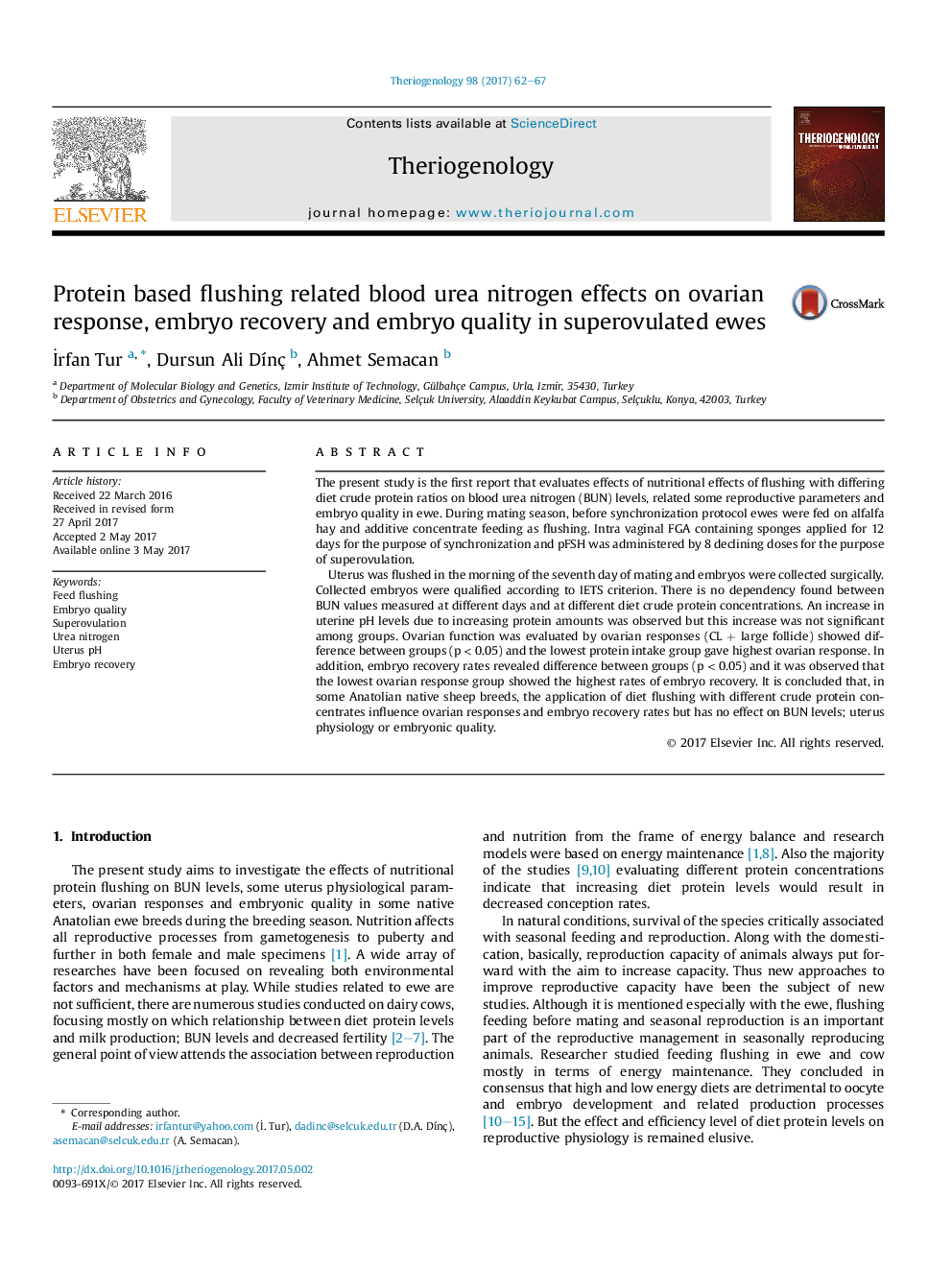| کد مقاله | کد نشریه | سال انتشار | مقاله انگلیسی | نسخه تمام متن |
|---|---|---|---|---|
| 5523071 | 1546071 | 2017 | 6 صفحه PDF | دانلود رایگان |
- Interactions between diet protein rate and blood urea nitrogen effects on reproductive efficiency is proposed.
- Flushing diet protein concentration is important for embryo recovery.
- High protein diet increase embryo recovery rate.
- Low protein results increased ovarian responses but failure in fertilization and decrease embryo yield.
The present study is the first report that evaluates effects of nutritional effects of flushing with differing diet crude protein ratios on blood urea nitrogen (BUN) levels, related some reproductive parameters and embryo quality in ewe. During mating season, before synchronization protocol ewes were fed on alfalfa hay and additive concentrate feeding as flushing. Intra vaginal FGA containing sponges applied for 12 days for the purpose of synchronization and pFSH was administered by 8 declining doses for the purpose of superovulation.Uterus was flushed in the morning of the seventh day of mating and embryos were collected surgically. Collected embryos were qualified according to IETS criterion. There is no dependency found between BUN values measured at different days and at different diet crude protein concentrations. An increase in uterine pH levels due to increasing protein amounts was observed but this increase was not significant among groups. Ovarian function was evaluated by ovarian responses (CL + large follicle) showed difference between groups (p < 0.05) and the lowest protein intake group gave highest ovarian response. In addition, embryo recovery rates revealed difference between groups (p < 0.05) and it was observed that the lowest ovarian response group showed the highest rates of embryo recovery. It is concluded that, in some Anatolian native sheep breeds, the application of diet flushing with different crude protein concentrates influence ovarian responses and embryo recovery rates but has no effect on BUN levels; uterus physiology or embryonic quality.
Journal: Theriogenology - Volume 98, August 2017, Pages 62-67
